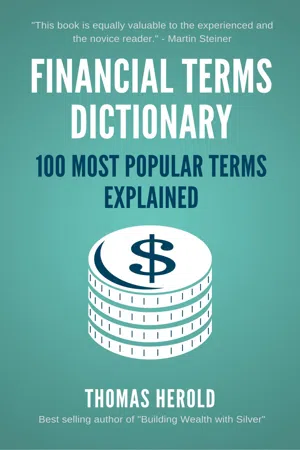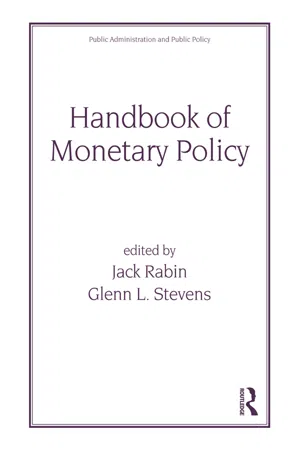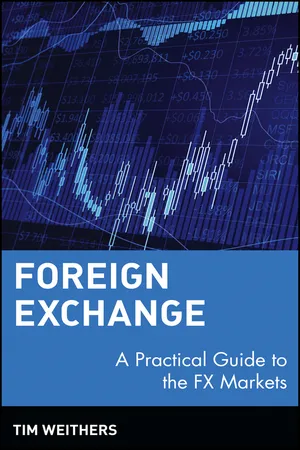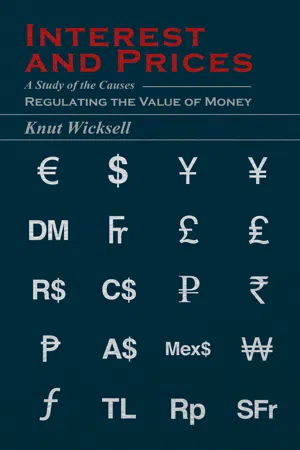Business
Real Interest Rate
The real interest rate is the nominal interest rate adjusted for inflation. It represents the true cost of borrowing or the real return on investment. By accounting for inflation, the real interest rate provides a more accurate measure of the cost of borrowing and the potential return on investment.
Written by Perlego with AI-assistance
Related key terms
4 Key excerpts on "Real Interest Rate"
- Thomas Herold(Author)
- 2020(Publication Date)
- THOMAS HEROLD(Publisher)
The Real Interest Rate is another type of rate used to determine how much purchasing power is received. It is the interest rate after the level of inflation is subtracted. Determining the Real Interest Rate is a matter of calculating the nominal rate and removing the amount of inflation from it. In the example above, supposed the economy’s inflation level is measured at five percent for the year. This would mean that the $1,050 in the account at year end only buys what it did as $1,000 at the beginning of the year. This translates to a Real Interest Rate of zero.Interest rates change for many reasons. They are altered for political gains of parties in power. By reducing the interest rate, an economy gains a short term boost. The help to the economy will often influence the outcome of elections. Unfortunately, the short term advantage gained is often offset later by inflation. This reason for changing interest rates is eliminated with independent central banks.Another main reason that interest rates change is because of expectations of inflation. Since the majority of economies demonstrate inflation, fixed amounts of money will purchase fewer goods a year from now than they will today. Lenders expect to be compensated for this. Central banks raise interest rates to fight this inflation as necessary.- eBook - ePub
- Jack Rabin(Author)
- 2020(Publication Date)
- Routledge(Publisher)
Real Interest RatesBharat TrehanResearch Officer, Federal Reserve Bank of San Francisco, San Francisco, CaliforniaReprinted from: FRBSF Weekly Letter, No. 93–38 (Nov. 5, 1993).In his latest Humphrey-Hawkins testimony before Congress, Federal Reserve Chairman Greenspan suggested that Real Interest Rates could come to play a larger role in the formulation of monetary policy. This chapter discusses what that role might be and describes what we know about the behavior of short-term real rates in the U.S. since the 1960s. Our review suggests that while it is unlikely that Real Interest Rates will provide information about how to conduct policy in the short run, they are likely to be useful in helping to avoid policy settings that are untenable in the long run.REAL RATES AND POLICY
The real rate of interest can be defined as the nominal rate minus the expected rate of inflation. Thus, if the nominal rate on 3-month T-bills is 4 percent, and the expected rate of inflation is 3 percent, then the real rate on 3-month T-bills would be 1 percent. Real rates are important because they provide a measure of the value of resources today versus tomorrow (abstracting from inflation), so they play a central role in people’s decisions about saving, consuming, and investing. Therefore, real rates figure prominently in most kinds of models of the macroeconomy, as well as in discussions of how monetary policy affects the economy.In thinking about the role of Real Interest Rates in monetary policy it is useful to have a concept of the equilibrium real rate. For our purposes the equilibrium real rate can be defined as the rate that would equate economy-wide demand and supply in the long run, once short-run disturbances have worked themselves out. Factors that shift demand or supply could cause this rate to vary over time. For instance, the equilibrium real rate would rise if individuals decided to consume more today and reduce the amount they had been saving for the future. - eBook - ePub
Foreign Exchange
A Practical Guide to the FX Markets
- Tim Weithers(Author)
- 2011(Publication Date)
- Wiley(Publisher)
1 Of course, in any given year, the prices of some products will be rising while the prices of some other items will be falling, so we have to look at the average price level relative to some “standard” or some well-defined “bundle” of goods. One of the measures of inflation calculated relative to a representative basket of U.S. household consumption goods and services is known as the Consumer Price Index. There are other measures of inflation for different strata of the economy: the Producer Price Index, the Wholesale Price Index, and the GDP Deflator.What Professor Fisher noted was that if one put one’s money in the bank for a year and received a market rate of interest or nominal rate of interest or money rate of interest (these all mean the same) of r = 5.20%, but inflation was 3.20% during that year, then one’s “real” purchasing power would have grown only at around 2.00%. This idea is summarized in what has come to be known as the (simple) Fisher Equation:or(3.2)rNOMINAL – Inflation = rREALThe interesting thing is that Irving Fisher tested this relationship (collecting data on nominal interest rates, inflation, and real returns) and, while this relationship seems almost definitional, it didn’t seem to hold. What went wrong? Fisher used the contemporaneous rate of inflation, but that is not what depositors are thinking about when they put their money in the bank at a fixed rate of interest. A depositor has to ask, “What do I think the rate of inflation is going to be over the next year (or whatever the future time period under consideration)?” In this sense, the correct Fisher relationship looks like this:(3.3)Because this perspective involves expectations, it highlights the importance of the fact that interest rates are, necessarily, forward looking prices. Different countries have different nominal rates of interest, and different rates of inflation (as well as different rates of expected inflation), not to mention possibly different Real Interest Rates (for a variety of reasons). Many economists believe inflation is always and everywhere a monetary phenomenon - Knut Wicksell(Author)
- 2011(Publication Date)
- Josephs Press(Publisher)
In the place of attempts to discover whether high prices are accompanied by high or by low rates of interest, it would have been well to elucidate the real meaning of a high or of a low rate of interest. It might then have been seen that it is an essentially relative conception, and that a further datum must be supplied, namely, the level of the natural rate, before it is possible to determine whether any particular rate of interest is to be regarded as high or as low. Such investigations will provide the subject-matter of Chapter 11. We must now consider whether it is possible for credit institutions to maintain their rates of interest at any desired level, or whether they are obliged sooner or later, as a result of the operation on the money market of the forces of supply and demand, to come into line with the natural rate. The latter is the view generally held by economists. In principle they are perfectly right; but they usually omit to provide any clear account of the manner in which the two rates of interest are brought together. The money rate of interest depends in the first instance on the excess or scarcity of money. How then does it come about that it is eventually determined by the excess or scarcity of real capital? “What is interest?” asks F. A. Walker, 1 and proceeds to give the answer. “It is the compensation paid for the use, not of money, but of capital. Money is only one of many forms of capital; and in loans is usually only the agent of effecting a transfer of other forms of capital than itself. If I borrow money, the chances are that I at once, or shortly afterwards, purchase with it articles suitable for my business or my personal necessities. . . . These were what I really borrowed. These are what, in any philosophical view of the subject, I pay interest on; not upon the money. The money was but the means to this end. . . .” This kind of generality is too metaphorical to take us very far
Index pages curate the most relevant extracts from our library of academic textbooks. They’ve been created using an in-house natural language model (NLM), each adding context and meaning to key research topics.



